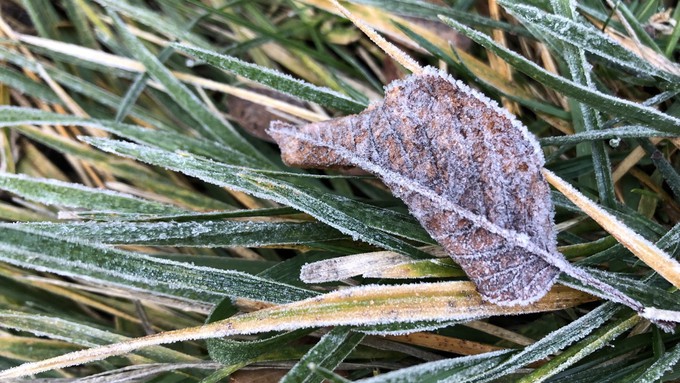
Pre-Christmas week looks chilly but dry

Expect frosty mornings for a few more days. Kathy Morrison
The final days of fall will be chilly and foggy. According to the National Weather Service, Sacramento can expect “widespread frost and fog” Saturday through Monday. Ground moisture and frosty nights will combine to create thick fog in many sections of the greater Sacramento area.
Overnight lows will dip to freezing or just below; stay on frost alert the next three nights. Daytime highs will be on the cold side, too, topping out at 53.
Midweek cloud cover will keep nights warmer – above 40 degrees – and help warm afternoons, too. The final shopping – and gardening – days before Christmas (and first days of winter) should be in the high 50s, says the weather service.
Unfortunately, those clouds are unlikely to drop any local rain; check soil moisture, then turn on irrigation as needed.
* Wednesday is the first day of winter, the shortest day of the year – and the traditional time to plant garlic and onions for harvest in summer.
* Mulch, water and cover tender plants to protect them during threat of frost. Succulent plants are at particular risk if temperatures drop below freezing. Make sure to remove coverings during the day.
* Just because it rained last week doesn't mean every plant got watered. Give a drink to plants that the rain didn't reach, such as under eaves or under evergreen trees. Also, well-watered plants hold up better to frost than thirsty plants.
* Keep poinsettias in a sunny, warm location. Water thoroughly. After the holidays, feed your plants monthly so they'll bloom again next December.
* Prune non-flowering trees and shrubs while they're dormant.
* Start pruning roses even if they’re still blooming. Make sure to remove foliage and rake out fallen leaves from beneath bushes to prevent spread of fungal disease.
* Clean and sharpen garden tools before storing for the winter.
* Rake and remove dead leaves and stems from dormant perennials.
* Bare-root season is here. Plant bare-root berries, kiwifruit, grapes, artichokes, horseradish and rhubarb. Beware of soggy soil. It can rot bare-root plants.
* In the vegetable garden, plant fava beans, head or leaf lettuce, mustard, radicchio and radishes.
* Browse through seed catalogs and start making plans for spring and summer.
Comments
0 comments have been posted.Sacramento Digs Gardening to your inbox.
Sites We Like
Garden Checklist for week of July 21
Your garden needs you!
* Keep your vegetable garden watered, mulched and weeded. Water before 8 a.m. to reduce the chance of fungal infection and to conserve moisture.
* Feed vegetable plants bone meal, rock phosphate or other fertilizers high in phosphate to stimulate more blooms and fruiting. (But wait until daily high temperatures drop out of the 100s.)
* Don’t let tomatoes wilt or dry out completely. Give tomatoes a deep watering two to three times a week.
* Harvest vegetables promptly to encourage plants to produce more. Squash especially tends to grow rapidly in hot weather. Keep an eye on zucchini.
* Pinch back chrysanthemums for bushy plants and more flowers in September.
* Remove spent flowers from roses, daylilies and other bloomers as they finish flowering.
* Pinch off blooms from basil so the plant will grow more leaves.
* Cut back lavender after flowering to promote a second bloom.
* It's not too late to add a splash of color. Plant petunias, snapdragons, zinnias and marigolds.
* From seed, plant corn, pumpkins, radishes, winter squash and sunflowers.